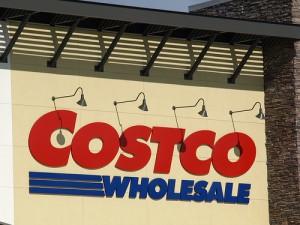The Costco Effect: Why Does the Wholesaler Cause Inflation?
 Photo: greenwenvy08
Photo: greenwenvy08There’s a lot of data showing that Walmart causes prices to decline when it enters a local market (see here, here and here). Why then, according to a new study, does Costco have the opposite effect, and cause competitors to raise their prices? The answer boils down to the complex ways that stores choose to compete against each other, and shows that not all big box retailers are created equal. Here’s the abstract:
Prior research shows grocery stores reduce prices to compete with Walmart Supercenters. This study finds evidence that the competitive effects of two other big box retailers – Costco and Walmart-owned Sam’s Club – are quite different. Using city-level panel grocery price data matched with a unique data set on Walmart and warehouse club locations, we find that Costco entry is associated with higher grocery prices at incumbent retailers, and that the effect is strongest in cities with small populations and high grocery store densities. This is consistent with incumbents competing with Costco along non-price dimensions such as product quality or quality of the shopping experience. We find no evidence that Sam’s Club entry affects grocery stores’ prices, consistent with Sam’s Club’s focus on small businesses instead of consumers.
The study’s authors, Charles J. Courtemanche and Art Carden have looked at big-box retailers before. Their 2010 paper, “Supersizing Supercenters? The Impact of Wal-Mart Supercenters on Body Mass Index and Obesity,” showed that each additional Walmart Supercenter per 100,000 people increases the obesity rate by 2.3 percentage points. They concluded that the proliferation of Walmart Supercenters may explain 10.5% of the rise in the obesity rate since the 1980s. (On a side note, if you haven’t already, check out this flow map depicting the growth of Walmarts and Sam’s Clubs.)
Their new study shows that a Costco store increases competitors’ grocery prices by 1.4% in the short run and 2.7% in the long run; whereas previous research shows that a new Walmart generally reduces prices by 1% to 1.7% in the short-term, and by about four times as much in the long run. This demonstrates just how nuanced the economics of strategic behavior really are. While incumbent grocers try to match Walmart on price, they figure it’s simply not worth it to go toe-to-toe with a warehouse club like Costco. While Walmart has made its stores more physically appealing over the years, Costco’s remain drab and utilitarian: pallets of bulk items sitting on concrete floors remains the dominant aesthetic. As a result, the only competitive advantage incumbent grocers see worth pursuing is on experience and convenience, choosing, as the authors point out, to cede “price-sensitive consumers who are willing to drive longer distances for a less pleasant shopping experience in order to obtain deep discounts.” By focusing on less-price sensitive customers, incumbents are able to sneak in some price hikes without affecting sales.
The Costco effect is strongest on fruits, vegetables, meats and drinks, with the biggest price increase on lettuce.
[HT: Stephen Gandel]

Comments